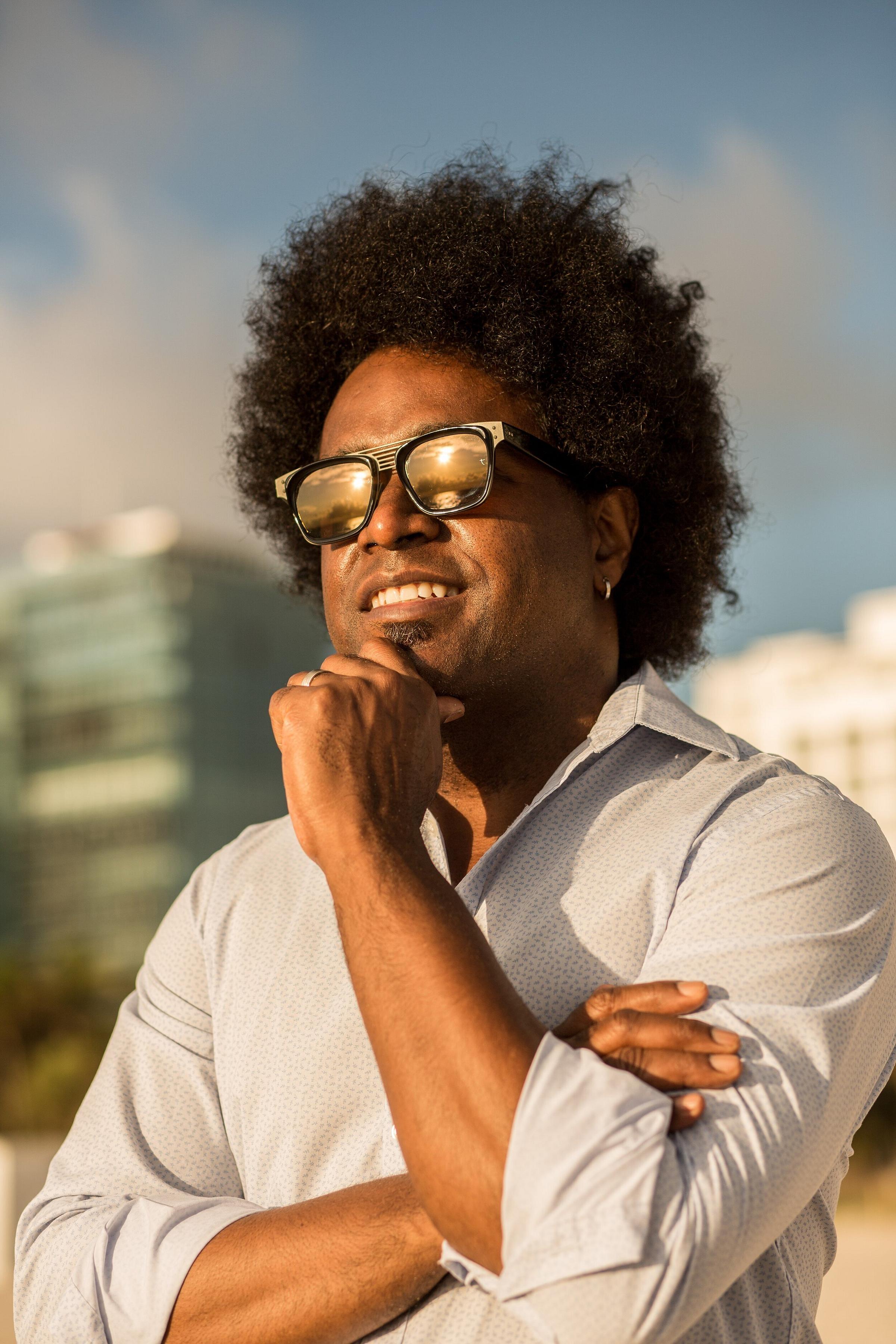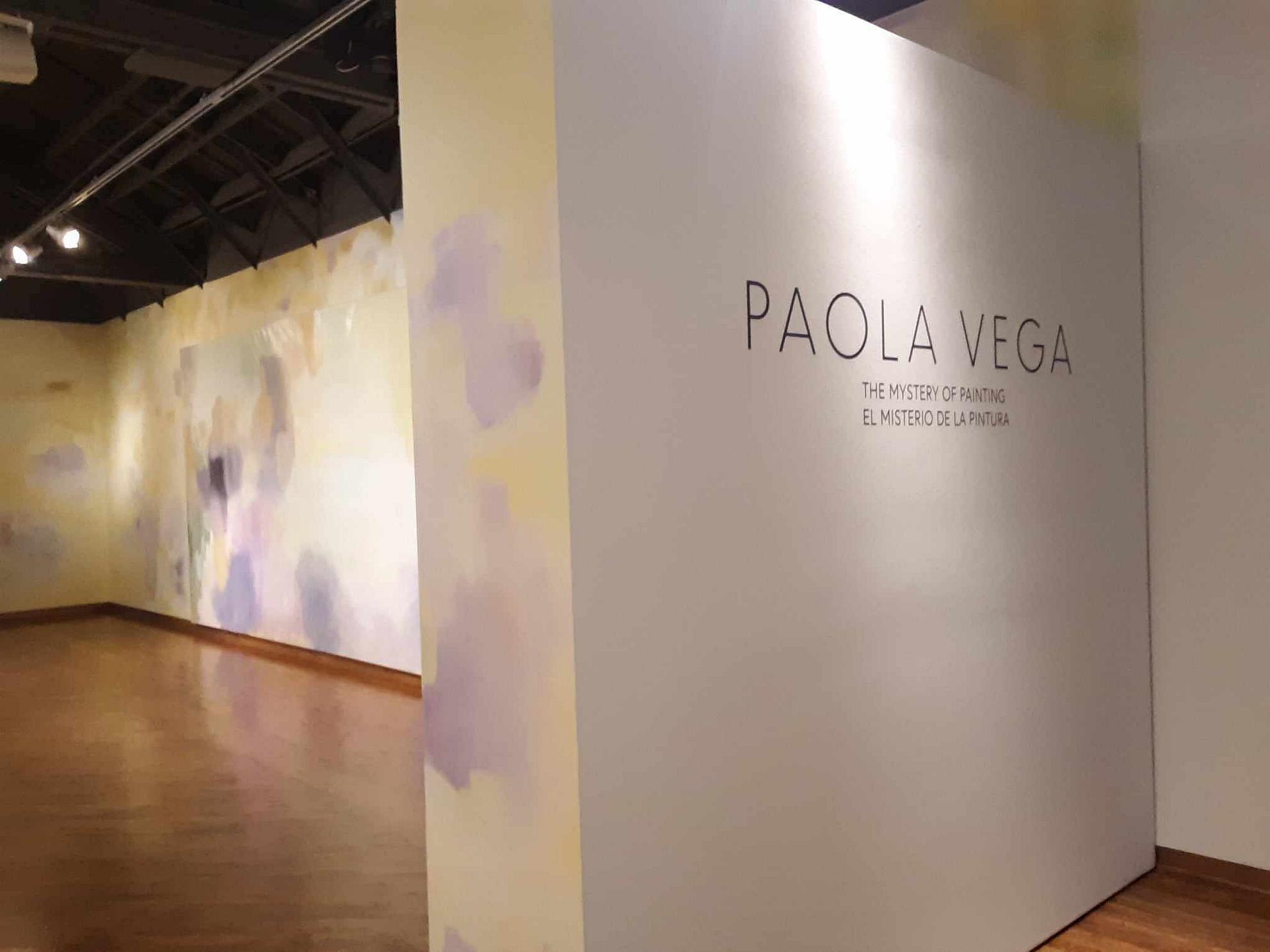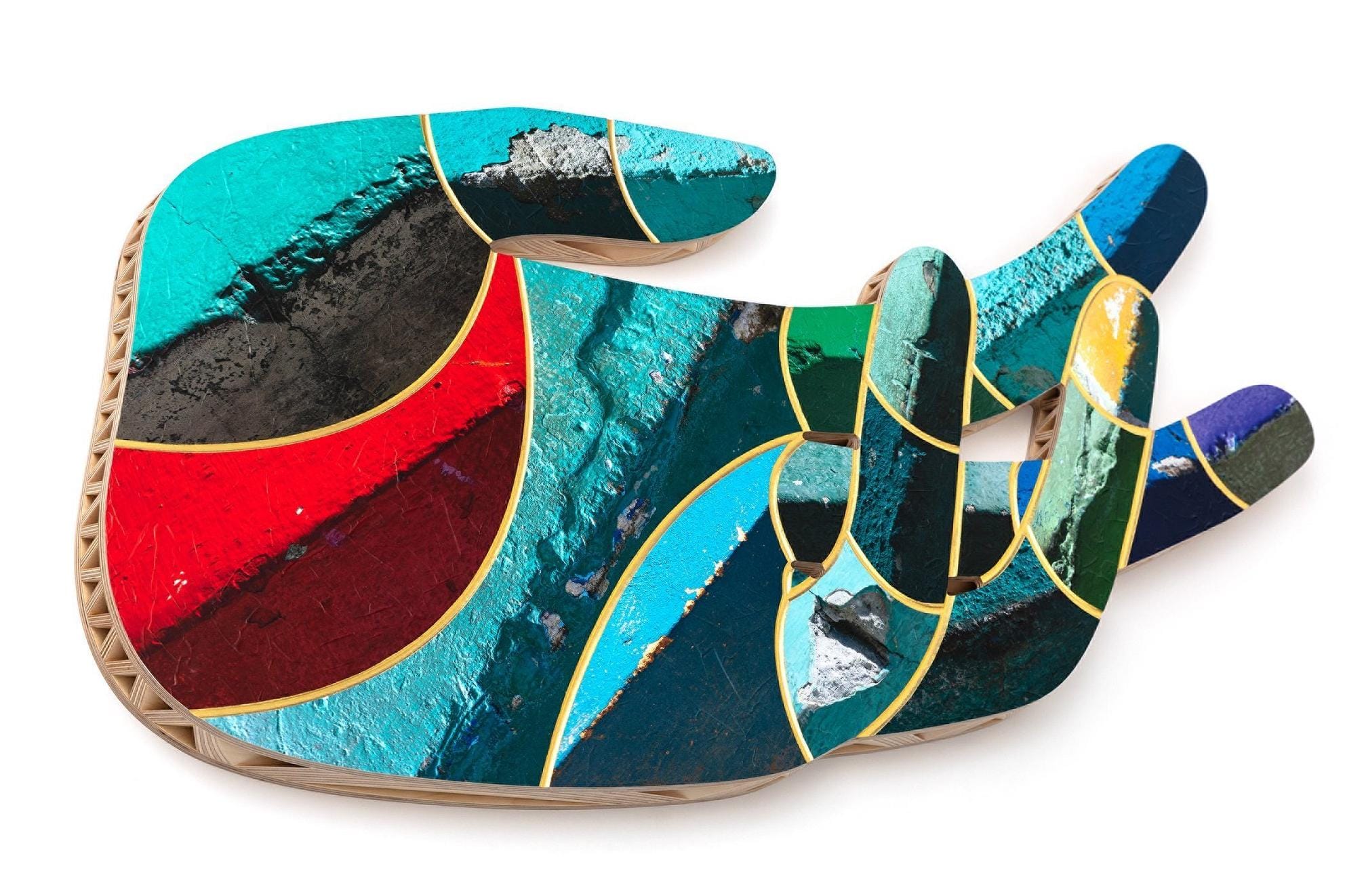ALEXANDRE ARRECHEA: INTERSECTED HORIZONS
Museum of Latin American Art (MOLAA)
Long Beach, Cal.
Sept. 9, 2023 – May 2024
PAOLA VEGA: THE MYSTERY OF PAINTING
MOLAA
Sept. 9, 2023 – March 2024
Wedged between Long Beach’s hipster playground, East Village, and the northern tip of its cliff-top gayborhood is one of the LBC’s cultural diamonds, the Museum of Latin American Art.Southwestern desert colors, Nile-style palms, and combustive external sculptures entice Alamitos Ave. motorists to stop by after a beach-bum morning ogling cargo ships and DDT-infused breakers. At some point, Long Beach undertook a campaign to rebrand itself as the “Aquatic Capital of the World.” Sit beneath the daunting stone-and-steel skyline of Downtown LB, in view of two of civilization’s busiest harbors ferrying wares and seafarers to distant ports à la Tintin or Titanic, and you sense what the slogan is getting at.
What better place than MOLAA to serve as cosmopolitan port-of-call for two artists from across different ponds?

Argentinian professor/painter Paola Vega occupies the gallery behind the gift shop for her Mystery of Painting installation, while Afro-Cuban visual artist (and ex-member of Havana’s Los Carpinteros collective) Alexandre Arrechea stacks two spacious galleries and their antechambers with works for Intersected Horizons.
Arrechea navigates the intersections of architecture and nature, criticism and comedy, the “functional and […] nonfunctional.” He collects two decades of retrospective solo pieces engineered to give patrons something to think about, the way political cartoons do, though these think-pieces bear the telltale markings of fun — fun creating, fun examining, fun parsing meaning until you sniff the heaviness of the subject matter, at which point you trudge outside, fists to the sky, bellowing existential questions like, How could a just god have allowed capitalism to run rampant for so long?!
The installation conveys optimism for humanity’s future, albeit with admonitions. Arrechea’s 2020 Miami Beach project Dreaming with Lions is memorialized in model and video form: a colosseum-shaped towel dispensary spelling out the Hemingway passage about how “man can be destroyed but not defeated,” which was erected circa month eight of Florida’s pandemic sort-of-lockdown. Other paeans to hopefulness include Orange Tree (aluminum, 2010) and its future-cousin Orange Functional (video, 2022): basketball hoops that blossom into mutant orchards where the community contributes fruit, generating new ways to play. No longer must vicious rivals compete over scarce resources; now every ball gets a net.
Speaking of abundance, my favorite painting, Cornfield (2007), depicts a vertical cob outfitted with CCTV lens-eyes like a biblically accurate angel-of-the-corn. GMOs offer another way to surveil you in an authoritarian state; how serendipitous that MOLAA’s ceiling above Cornfieldboasted not one but two(!) security-camera domes deterring me from “engaging with the art” too closely.
For his 2013 NYC No Limits sculptures, which briefly conquered hoity-toity Park Avenue’s median and are referenced here in maquette form, Arrechea cartoonifies the folly in each landmark’s connotations: bank towers as hubristic safety hazards, hotel wealth-bastions ouroborically self-fellating, courthouses pivoting either way (corruptly), and the military-industrial snake-coil of the Empire State – Pentagon. Other pieces evoke stadium seating among pastoral settings — see the jaw-droppingly intricate, stereogrammy watercolor-wall River and Ripples (2022) — or commercial role-reversals, like Hotel (2012), a black figure spatially exploited to provide rooms for buildings to stay in, but not without piercing it like bullets in a CSI forensic analysis. Ultimately, on a smaller architectural scale, Arrechea, die-hard proponent of playful juxtapositions, is most fascinated by corners: the fear of what hides beyond them — think Mulholland Drive’s traumatizing diner scene—but also the unknowable possibility of something positive, like humanity finally ghosting that nasty mofo, capitalism. Just something to think about.
One more corner spills from Intersected Horizons into Paola Vega’s gallery. Deconstructing splotches that spread from massive canvases onto the actual walls, Vega’s five paintings are aggressively pleasant. Most are titled after their prominent colors, like the steamy, liquid-evening mood of Blue (2019). On the epicentral bench, viewers are dwarfed by the epic 334-inch-long panel of Yellow and Violet’s (2018) springtime rumpus. Color fields remind me of Rothko or Jeremy Blake’s ethereal transitions in Punch-Drunk Love, but there’s a different love emanating from Vega’s paint: the kind that engulfs you, womb-like, if that womb forgoes blood and amniotic goo to bathe you in a rippling Easter-morning hayfield between blurry creeks.
If Arrechea brings wry commentary to ignite brains like wasabi, then Vega serves up abstract ginger to ground them again. Best served in that order.







